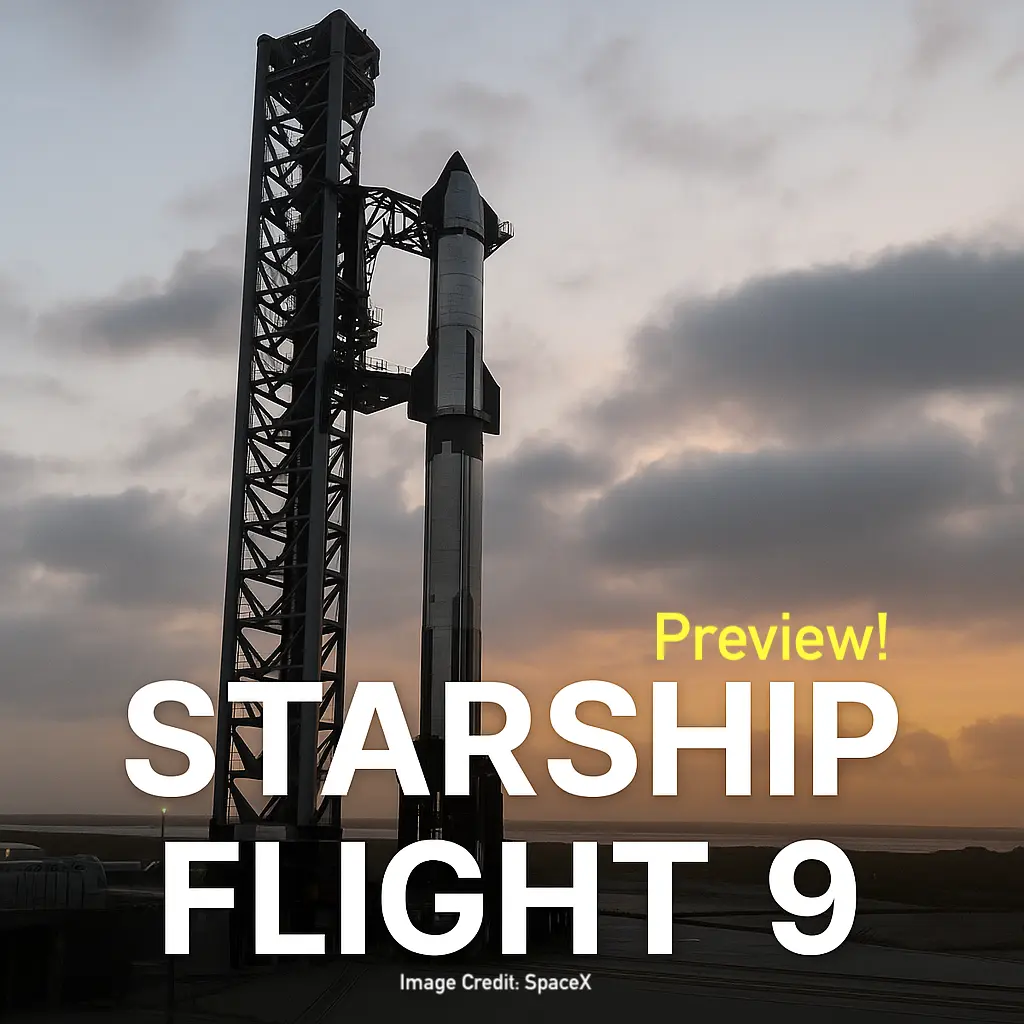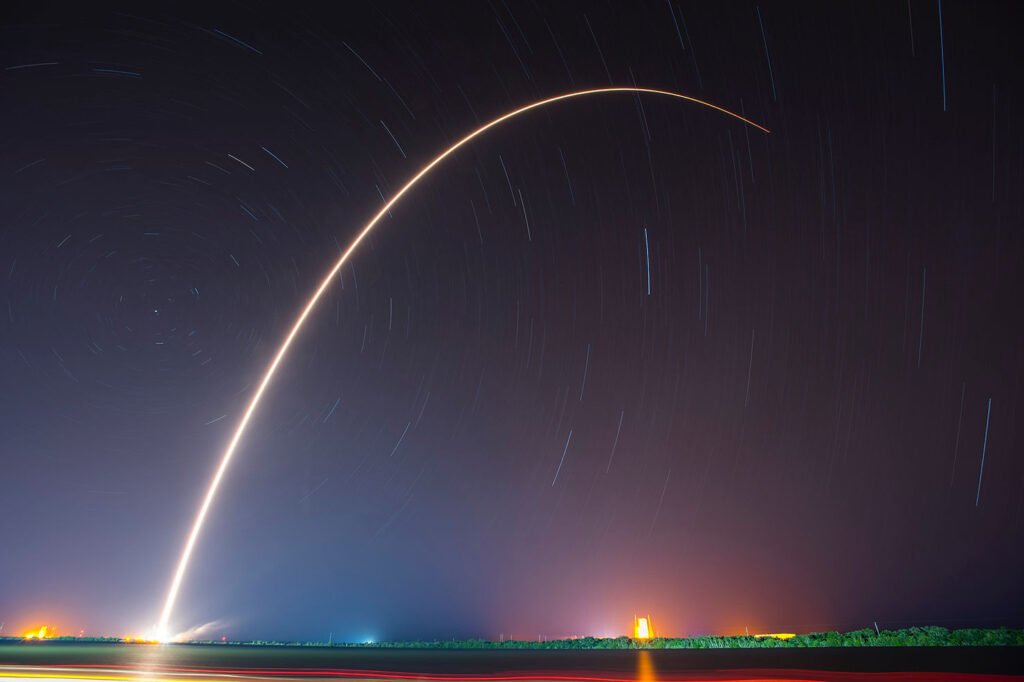On May 27, 2025, at 6:30 p.m. Central Time, SpaceX is scheduled to conduct the ninth flight test of its Starship system from Starbase, Texas. This mission represents a major milestone in the company’s pursuit of scalable, routine access to space and the long-term goal of making life multiplanetary.
First Reflight of a Super Heavy Booster
This test marks the first reuse of a Super Heavy booster, validating key processes in booster refurbishment and rapid turnaround. Booster B14-2, which first flew on Flight 7, has undergone extensive inspections, with most components—including 29 of 33 Raptor engines—remaining flight-proven.
This advancement in rocket reusability is pivotal in reducing launch costs and increasing launch frequency—critical for large-scale operations such as Starlink satellite deployments, Artemis lunar missions, and future Mars exploration.
Innovative In-Flight Experiments
Flight 9 is designed to go beyond nominal performance by conducting several key flight experiments:
- Controlled Flip Maneuver using blocked vents on the hot-stage adapter
- Boostback Burn to a safe offshore splashdown
- High Angle-of-Attack Descent to increase atmospheric drag and improve descent control
- Engine-Out Landing Test, intentionally disabling one of three center engines during landing
These tests simulate off-nominal flight conditions, providing critical real-world performance data that enhances reliability and safety for future missions—including human spaceflight.
Upper Stage Objectives and Reentry Trials
The Starship upper stage (Ship 25) will follow a suborbital trajectory to deploy eight Starlink mass simulators, execute an in-space engine relight, and conduct a controlled splashdown in the Indian Ocean.
Key reentry experiments include:
- Testing of alternative thermal protection systems like metallic and actively cooled tiles
- Evaluation of functional catch fittings for future launch tower recoveries
- Stress-testing rear flaps and new smoothed tile edges under maximum dynamic pressure
These trials prepare the vehicle for full reusability, with future upper stages expected to return directly to the launch site and be caught by the robotic arms of the launch tower, dubbed Mechazilla.
Regulatory and Safety Milestones
In preparation for this flight, the FAA granted an expanded launch license allowing up to 25 Starship launches per year. Safety protocols have been updated, with a hazard zone extended to 1,600 nautical miles to minimize risk to populated areas.
Flight updates and live coverage will be available via the official SpaceX webcast, as well as on X (formerly Twitter) and the X TV app. The webcast begins approximately 30 minutes before liftoff.
Strategic Importance of Starship Flight 9
Flight 9 is emblematic of SpaceX’s agile engineering philosophy—test, iterate, and improve. By validating critical systems and expanding the envelope of operational scenarios, the mission supports the company’s broader goals:
- Dramatically reduce launch costs
- Improve resilience in crew-rated missions
- Enable interplanetary travel to the Moon and Mars
- Build infrastructure for orbital stations and space-based manufacturing
This test is a decisive step toward a future where spaceflight is routine, affordable, and transformative, establishing the foundation for a sustainable presence beyond Earth.
Watch Starship Flight 9 live and follow updates on SpaceX’s official launch page or @SpaceX on X.



